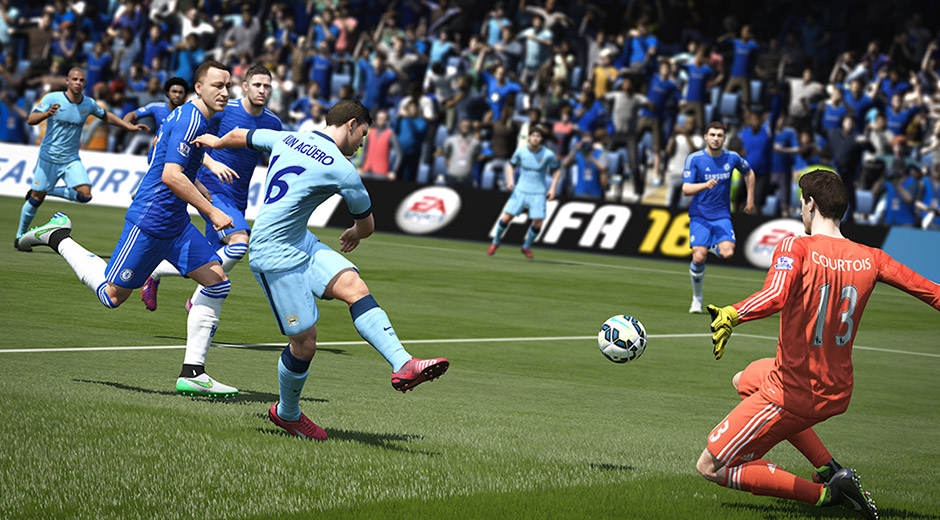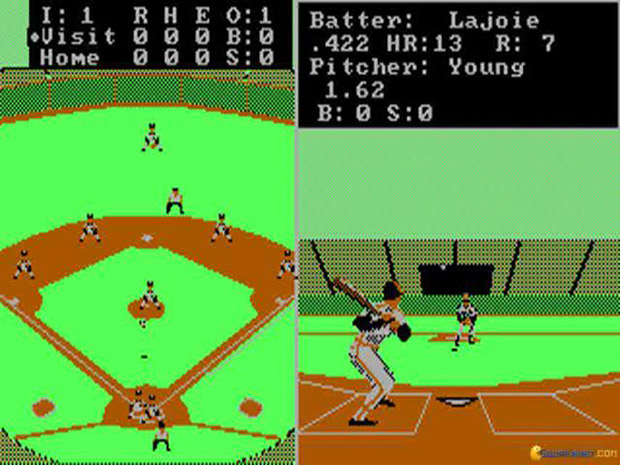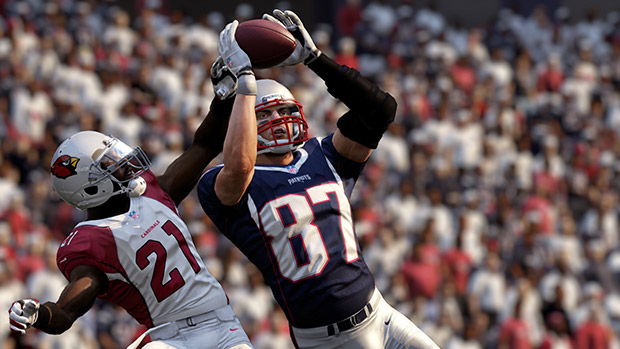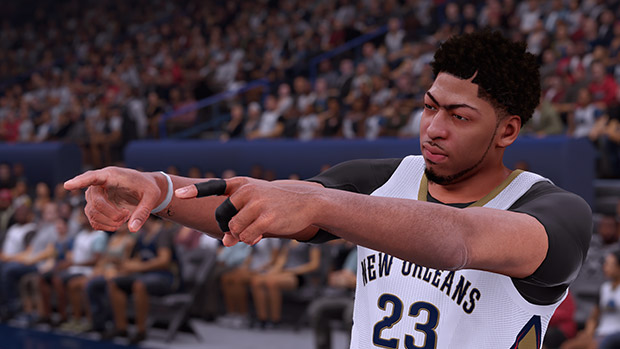
Know Your Genres: Sports Games
Just what do we really mean when we talk about “game genres,” anyway? Sure, you’ve probably seen that “fans of the genre will enjoy this” phrase in umpteen game reviews, but the truth is that the most durable game genres have walked some long, ever-evolving, and very interesting roads over the past several decades. In this weekly series, Xbox Wire’s editorial team will break down exactly what shaped your favorite genres, why they’re so timelessly awesome, and where they’re headed – while providing you with some expert advice on the past and modern classics that you should check out!
This week, we’re tackling the monster of a genre that is sports games. In reality, we could do history lessons on each sport – they’re all completely different games, with different control schemes and different fan bases. Nevertheless, they share quite a few common frames of reference, so we’ll condense this mega-genre down and talk about why sports games constitute one of the most important genres to video games… because they basically were video games, back at the beginning.
The Past
In 1958 – long before football and soccer dominated the sports market, long before people even really had a concept for what a video game was – William Higinbotham created what many believe to be the first video game. Tennis for Two was an oscilloscope game that Higinbotham made to entertain visitors who came to tour the laboratory he worked at, and he had no idea that it would be the first step to a worldwide phenomenon. It would be another 14 years before the world saw Pong, a rudimentary version of tennis (or ping-pong). By then, sports-themed pinball/video combos from the likes of SEGA and Taito were becoming popular. But Pong, as you all know, became the face for video games in the ‘70s, a huge mainstream hit that turned video games into the must-have Christmas gift, and a household necessity for anyone keeping up with the joneses.
From there, sports games started to rapidly evolve as new technologies let developers create more complex and realistic representations. Taito was a frontrunner in sports games from 1973-74, with multiple games developed by Tomohiro Nishikado, the creator of the original Space Invaders. Nishikado and Taito were the first to create sports games that allowed players to control multiple people on the team. Davis Cup, Soccer, and Basketball all featured multiplayer support and the first rudimentary elements of team play. As the rise of consoles began, Atari and Mattel both introduced different styles of basketball, football, baseball, hockey, and soccer games. Atari went after the arcade feeling of games, while Mattel went for visual flair. The first half of the ‘80s saw a game for nearly every sport imaginable – including professional wrestling, bullfighting, rock-climbing, horse racing, and skateboarding.
In 1987, sports games took the next evolutionary step when Electronic Arts released Earl Weaver Baseball. It was, at the time, the most visually stunning and realistic sports game ever made, and it featured artificial intelligence in the players, allowing them to chase after balls, throw smart pitches, and steal bases. Earl Weaver Baseball became the foundation for all baseball games over the next decade.

At the dawn of the 16-bit era, a familiar face in sports games made its debut. In 1988, John Madden Football hit the Apple II computer. While the original version is far from the football game we know and love today, the series rapidly evolved; by 1990, it had become the iconic football game whose layout is still pretty much the same more than 25 years later. While Madden grew and evolved, EA and other companies were fine-tuning and improving other sports games as well. The NBA Jam series was born, bringing over-the-top basketball to arcades and homes, and immortalizing the phrase “He’s on fire!” Wayne Gretzky Hockey taught us all how to deck a fellow player and send them sprawling to the ice.
By the late ‘90s, development studios were starting to use 3D technology and motion-capture to make sports games even more realistic. This period also saw the rise of extreme sports, with games like Tony Hawk’s Pro Skater and SSX bringing trick-based sports to consoles. Games like Madden, Major League Baseball featuring Ken Griffey, Jr., Virtua Tennis, and Tiger Woods PGA Tour brought a new sense of realism to the genre that the 16-bit era lacked.
Numerous big-name titles from multiple developers gave gamers a wide selection, and created “sports wars” as diehard as the console wars. But in the mid-2000s, EA Sports and 2K Sports both signed exclusivity deals for football and baseball, respectively… and officially branded sports games saw an unprecedented divide between publishers. While some developers tried to make games without the official licenses, they found that response was lackluster. Players wanted the accurate, up-to-date rosters and branding of the sports they loved to be present in their games, reflecting the real-life sports.
The Present
For the last decade now, the Madden NFL series has dominated the football market, capitalizing on EA’s lucrative exclusivity deal with the NFL. Likewise, despite no exclusivity contract, 2K Sports’ NBA 2K series has proven to be the dominant force in basketball. And in most parts of the world, EA’s FIFA Soccer series is a titanic juggernaut (much in the same way that Madden NFL is for the U.S.).

In addition to the fine-tuned machines that represent the big sports, a lot of alternative sports games have made their debut. Motion controls hit the scene in the mid-2000s and sports games became a natural choice. Certain sports, like tennis or golf, were a perfect fit – but we saw nearly every sports game try its hand at motion controls at one time or another. The best of these drew us deeper into the fantasy of being a sports hero, while the worst made us look more incompetent at sports than we would be if we actually stepped on the field with pro athletes.
In recent years, sports games have become about more than the teams and the game itself. The most popular modes in many sports games – Madden NFL and NBA 2K among them – are the more personal modes, where players create their own character (often modeled after themselves) and play exclusively as that character. Combining elements of role-playing games into sports, these player-focused modes have become a staple of almost every major sports franchise on the market.
The Future
The NBA 2K series has dived head on into this create-a-player motif with its MyPlayer mode. Each year sees the game expand even more; this year’s game, NBA 2K16, featured a MyPlayer mode with a story directed by Hollywood legend Spike Lee. We’ve officially hit the point where sports games have started to emulate sports films, which is an exciting prospect. Many of us have been playing out our own version of “Hoop Dreams” from the comfort of our living room, and it’s awesome to see games take that dream of being a sports star and giving it the full treatment.

Sports games have always been on the forefront of technology. As a genre often characterized by annual installments, it has to constantly evolve – adding new features, changing how control schemes work, and generally staying ahead of the curve. This is why you sports games tend to be among the earliest adopters of any new game tech. 3D Television support and motion controls like Kinect have been part of sports games since they were introduced. Online play (both real-time and in asynchronized leagues) have been a huge part of sports games long before online play was the dominant force for multiplayer. On the other side of the coin, sports games are one of the final holdouts for couch-based co-op and competitive play. They’re one of the few genres these days that still let you play with your buddy sitting right next to you.
Soon, devices like the Oculus Rift will be hitting the market, and you can bet that sports games will be right there to take full advantage of them. And that’s awesome, because sports games are a natural fit for this kind of technology. They dance that perfect edge between giving you familiar experiences that you can adapt to, and creating a fantasy of doing something that – for the average human being – is impossible.
The 10 Sports Games You Must Play
ESPN NFL 2K5 (Xbox – 2K Sports, 2004)
FIFA 14 (Xbox One/Xbox 360/Windows – Electronic Arts, 2013)
Madden NFL 16 (Xbox One/Xbox 360, 2015)
MVP Baseball 2005 (Xbox/Windows – Electronic Arts, 2005)
NBA 2K12 (Xbox 360/Windows – 2K Sports, 2011)
NBA Live 2005 (Xbox/Windows – Electronic Arts, 2004)
NBA Street Vol. 2 (Xbox – Electronic Arts, 2003)
SSX (Xbox 360 – Electronic Arts, 2012)
Tiger Woods PGA Tour 12: The Masters (Xbox 360/Windows – Electronic Arts, 2011)
Tony Hawk’s Pro Skater 3 (Xbox/Windows – Activision, 2011)
